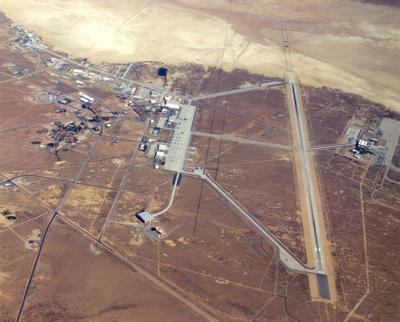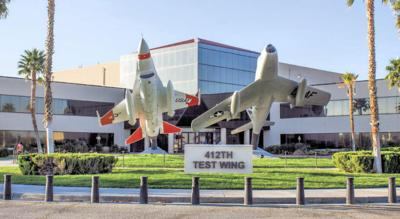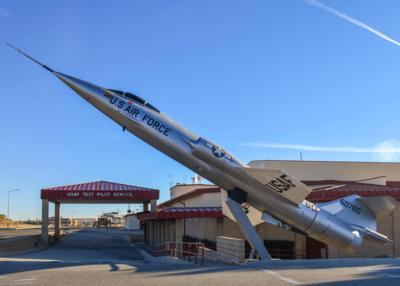ACE is the Place
Edwards Air Force Base is the sort of place Buzz Aldrin would call Magnificent Desolation. Throughout its 89-years, the facility has served as the backdrop for research and flight operations that have defined the course of human aeronautical endeavor.

The base sits at the west-central boundary of Rogers Dry Lake, a 65-square-mile salt-pan in the Mojave desert, the ground of which is sufficiently hard and dry to serve as a landing surface for even the heaviest modern aircraft.
Yeager broke the sound barrier over Rogers, and aircraft such as Northrop’s YB-49 Flying Wing; North American’s X-15; Boeing’s B-52 Stratofortress; Convair’s B-58 Hustler; Lockheed’s C-130, C-5, U-2, and SR-71; Burt Rutan’s Voyager, and NASA’s Space Shuttles all cut their teeth over and upon what is perhaps the world’s most storied and historic expanse of nothingness.
More recently, Edwards hosted several rounds of training in a contemporary combat doctrine known as Agile Combat Employment, or ACE, training.
Developed by the U.S. Air Force to counter near-peer threats (read China and Russia), Agile Combat Employment is a means by which to rapidly deploy aircraft and other tactical assets across widely dispersed locales within an operational theater without sacrificing combat capability. Expressed plainly, ACE permits the USAF to fight on its feet—without the need for ponderous infrastructure such as airfields and McDonald’s.
Utilizing ACE concepts, combat assets move continuously from location to location, exploiting opportunities to attack while keeping key assets out of harm’s way.
Adversary threats to Air Force operations at forward bases can deny U.S. power projection, overwhelm traditional defense designs, impose prohibitive losses, and lead to mission failure. To address these challenges, ACE shifts operations from centralized physical infrastructures to a network of smaller, dispersed locations or cluster bases—such as a dry lakebed in the middle of the Mojave Desert.

The ACE exercise held at Edwards in late June saw the 412th Operations Support Squadron host four A-10 Thunderbolt IIs from Davis-Monthan AFB’s 355th Wing, and a small team of Airmen from Travis AFB’s 821st Contingency Response Squadron (CRS).
Prior to landing the 355th Wing’s A-10s on Rogers [Landing, in Air Force Contingency Response Squadron parlance, denotes ground personnel guiding an aircraft to Earth], Airmen from the 821st Contingency Response Squadron (CRS) assessed the lakebed’s condition and suitability for the mission.
“We assessed an airfield in an austere location,” explained Staff Sgt. Denver Davis, 821st CRS. “We landed four A-10s from multiple approaches to verify we have the ability to integrate with fighter squadrons and attack squadrons.

After the 821st CRS team successfully landed the A-10s, they once again inspected the lakebed runways, making note of the ruts created by the aircrafts’ tires.
Davis explained that the Multi-Capable Airmen (MCA) skillset is vital for Airmen likely to be deployed to different areas of the world under different mission parameters, e.g., humanitarian aid, evacuations, or killing communists. The ACE training further improves MCA skills by allowing airmen to train with different aircraft types—a trick at which the Edwards AFB ground crews excel on account of the 412th Test Wing’s diverse fleet of fighters, bombers, and cargo airplanes.
“Without the help of the 412th OSS…we would not be able to come down here and implement these capabilities at Edwards Air Force Base, and I thank them for helping us,” Davis concluded.
 ANN's Daily Aero-Term (04.28.24): Airport Marking Aids
ANN's Daily Aero-Term (04.28.24): Airport Marking Aids Aero-News: Quote of the Day (04.28.24)
Aero-News: Quote of the Day (04.28.24) ANN's Daily Aero-Linx (04.28.24)
ANN's Daily Aero-Linx (04.28.24) Aero-News: Quote of the Day (04.29.24)
Aero-News: Quote of the Day (04.29.24) ANN's Daily Aero-Linx (04.29.24)
ANN's Daily Aero-Linx (04.29.24)





